On Thursday 4 July, 1968, Brunel University (as it was then) held its official opening ceremony, having received its Royal charter two years previously.
Complete with military band and inflatable auditorium, the event was attended by around a thousand people, including the university’s original Chancellor, Lord Halsbury, and Vice Chancellor, Dr James Topping.
To mark the 50th anniversary of this special occasion, Brunel University London Archives have delved into their remarkable collection for the original write-up of the event, published shortly after the ceremony.
Official Opening of Brunel University
By John Burnett, Reader in Social Institutions, July 1968
The official opening of new universities has become almost a national pastime in recent years, and it is no longer easy to do the thing with freshness and originality accompanied by the ceremonial that must go with such occasions. The opening of Brunel University's new buildings on Thursday, 4 July 1968, succeeded admirably in combining old and new forms, the traditional and the technological. Although there were trumpet fanfares and processions of dignitaries, the distinguishing characteristics of the occasion were efficiency, speed and an absence of platitudinous oratory that marked off the 25-minute ceremony from similar ones elsewhere.
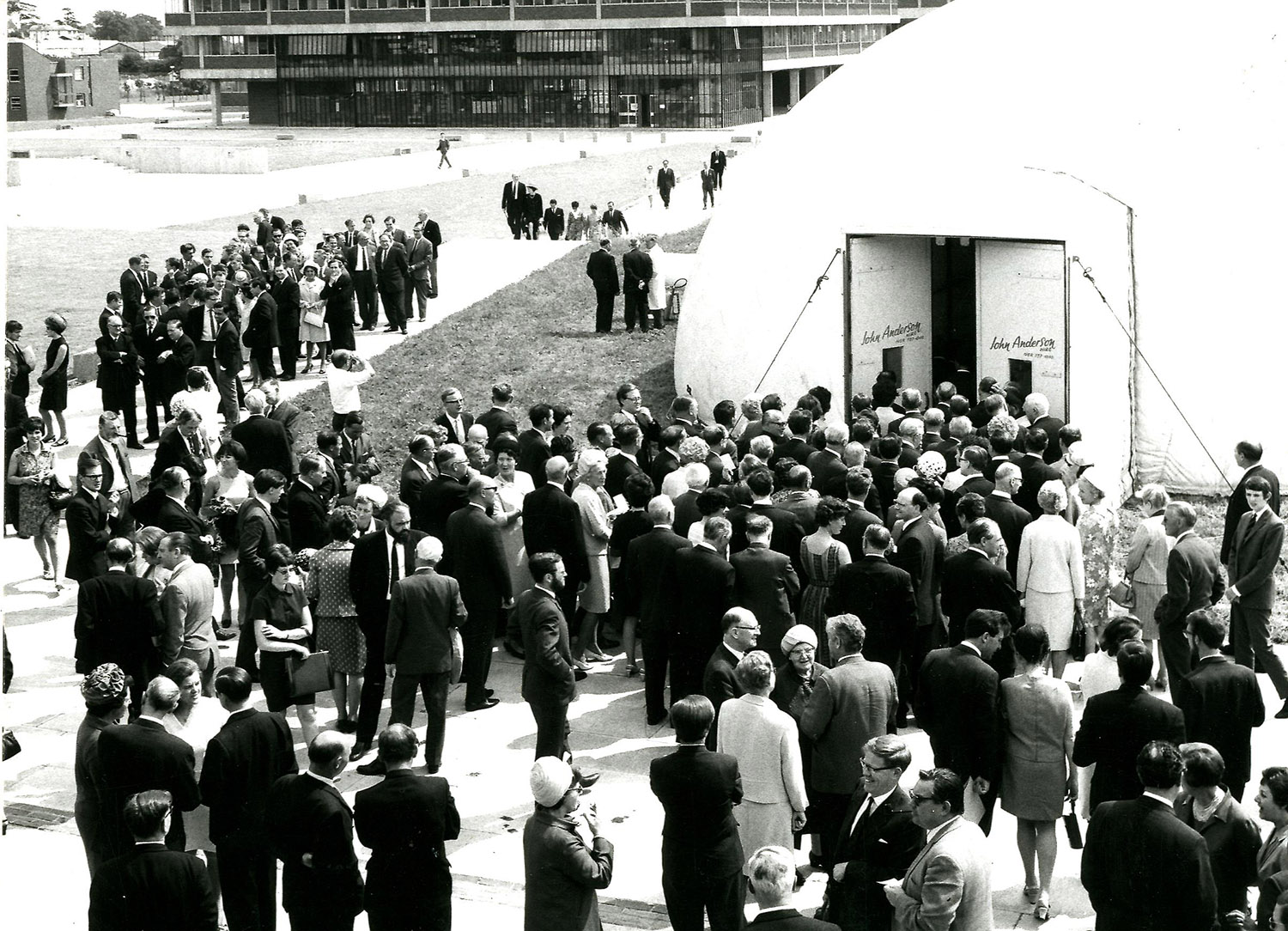
The opening ceremony was help in an inflatable auditorium - the air house - where the Library now stands . The event was late starting as the audience of around 1000 people had to pass through an air lock, without which the arena would have collapsed
Moreover, it was an occasion of which I. K. Brunel himself would have approved. Enough of the buildings are now completed to indicate the architect's conception of the whole and most observers were agreed that they were not only impressive and functional, appropriate for a technologically orientated institution, but that they also had considerable grace and beauty. Brunel, the engineer artist, would have liked them. He would also have found strangely appropriate the 1,000-seater, air conditioned, pumped-up marquee in which the ceremony took place in the absence of our own assembly hall.
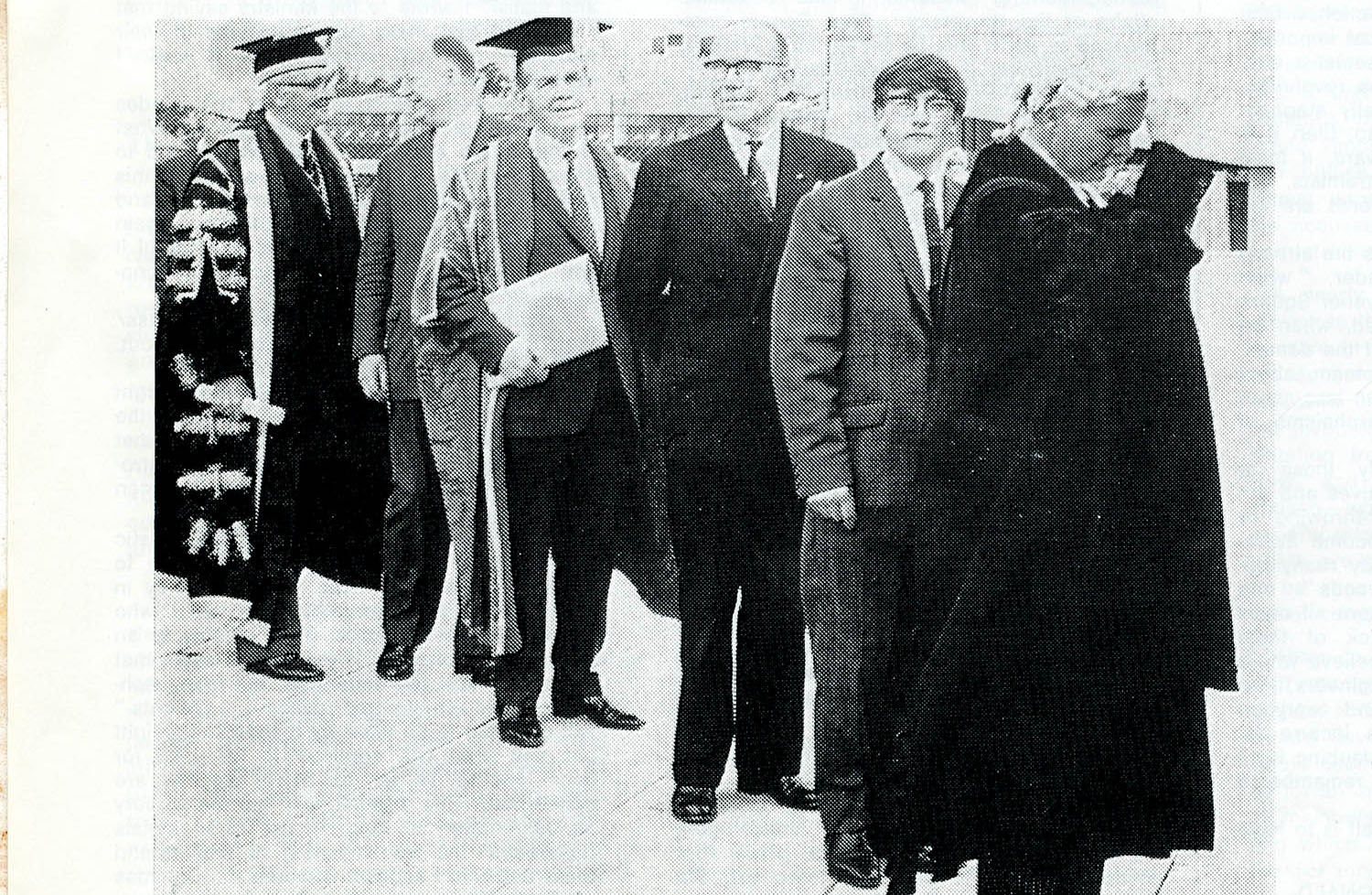
Amongst those in attendance (left to right): Lord Halsbury, Chancellor; Dr Beeching, keynote speaker. Dr Topping, Vice Chancellor; Mr Stutchberry, Chairman of the Council; Dick Hales, Union President; Town Clerk of Hillingdon
In opening the proceedings Lord Halsbury, the Chancellor of the University, paid particular tribute to the architects and builders and to the many people who had been associated with their work. He reminded us that 'although a Senate may specify and Council may authorise, only an architect can design and only a contractor can build, and neither is professionally capable of talking to the other without the good offices of a quantity surveyor. Without either of them, all you would see here today would be grass fields and disembodied ideas.' Lord Halsbury then proceeded to introduce the official opener of the University buildings , Lord Beeching. He said that the choice of Lord Beeching for the occasion was particularly appropriate, since he represented an outstanding combination of technologist, businessman and man of affairs generally, the kind of person that a technological university might itself hope to produce one day.
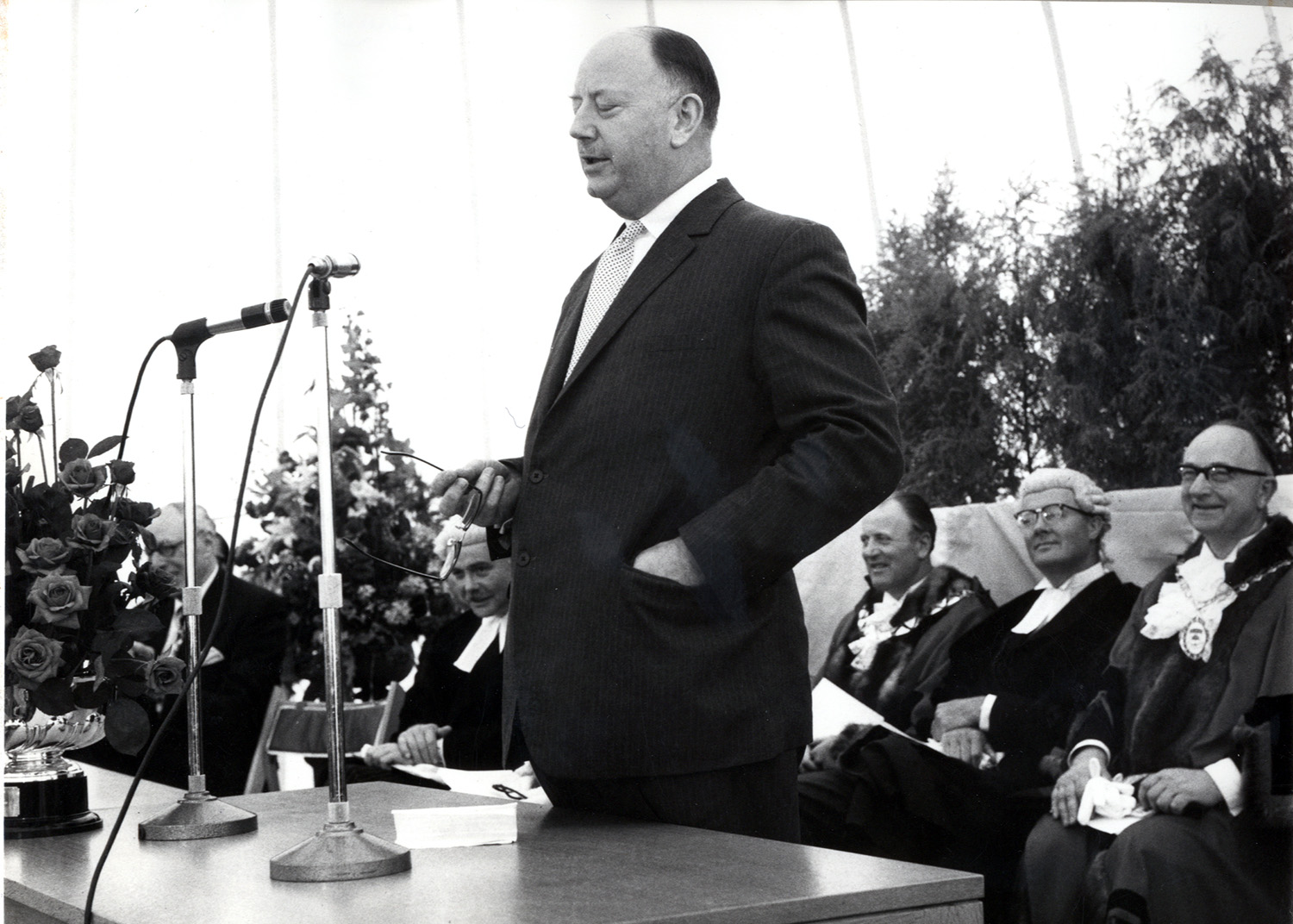
Lord Beeching, former Chairman of British Railways and a member of the Governing body of Brunel College of Technology, gave a 'short but engaging speech.'
In a short but engaging speech Lord Beeching said that the invitation was a very gratifying one for him. 'I have something of a reputation as a closer of things, and you know, this is not in fact a reputation that any sensible man would choose. I did not choose it - it was a form of distinction that was thrust upon me - and it does , indeed , give me very much greater pleasure to open things and see things grow.' Lord Beeching recorded that he had been a member of the Governing Body when Brunel College was first founded and that it was a great pleasure to witness its translation to University status so quickly and well done. ('We are, I think , a little wanting in things which are done well and quickly and which are wholly satisfying in this country at the present time.') The need for expansion of technological education, in the widest term, was obvious.
Our national well-being and standard of living depended on the activities and efficiency of industry, yet 'there is still a very imperfect understanding and appreciation of the role of industry; there is, in spite of the absurdity of it, a gap in understanding, appreciation and sympathy between quite a section of the population and the big mass of people who are engaged in industry, and I see one of the important roles of Brunel University as being the building of a bridge between these two groups of people.' The establishment of Brunel, as of the other technological universities, was a recognition that technology had now fully entered the field of learning; he wished all success to its future expansion.
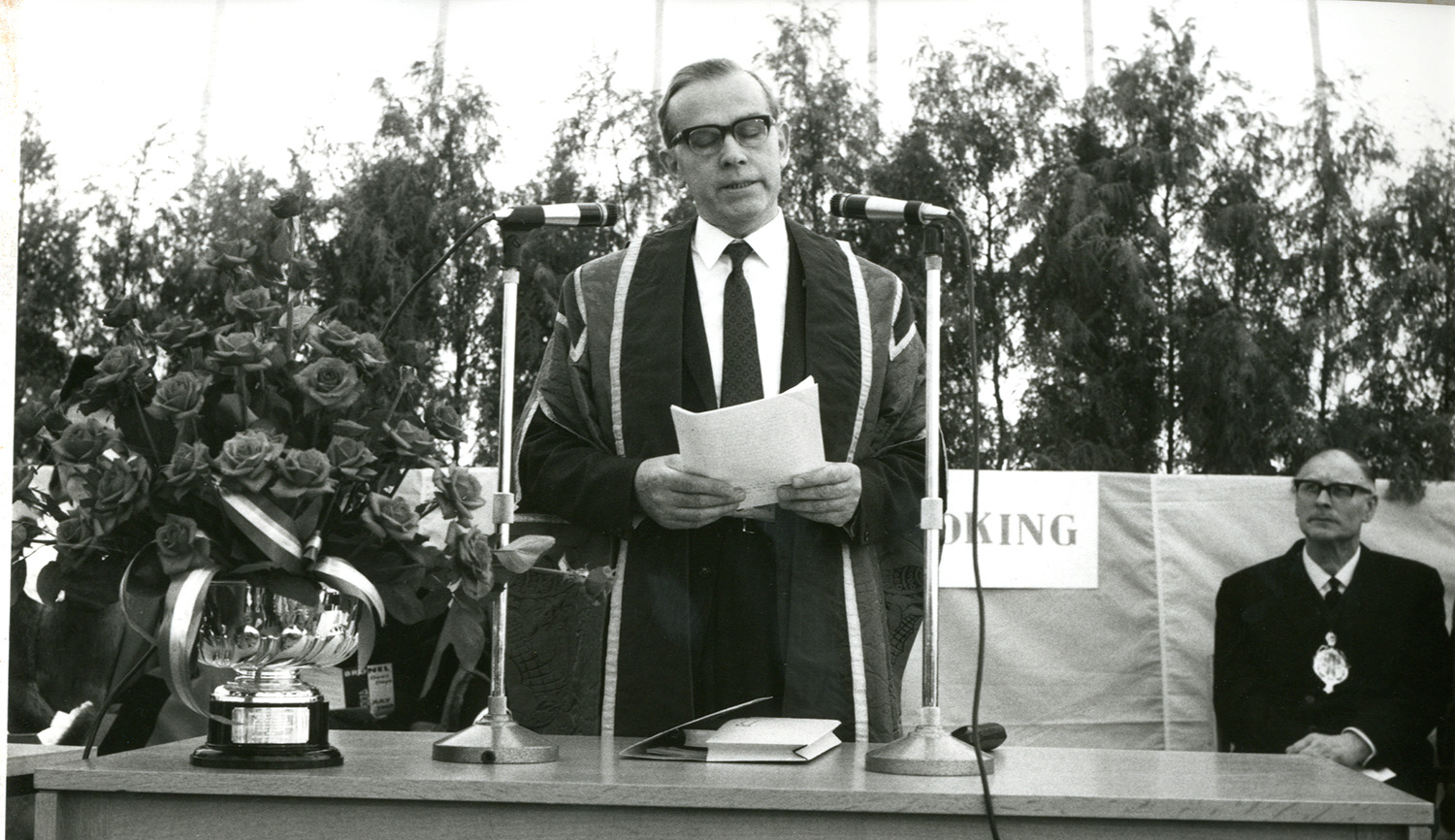
Brunel's first Vice-Chancellor, Dr Topping, addressing the audience. James Topping was the first to plead that the new univeristy be named after a well-regarded engineer, rather than its location.
Dr Topping, the Vice-Chancellor, then expressed the gratitude of the University to Lord Beeching for his speech and formal opening of the new buildings. He went on to thank many others - the former Middlesex County Council which had donated the site at Hillingdon for the expansion of what was then Brunel College of Technology, the former Ministry of Education for its part in the determination of policy towards the development of Brunel as a University, the University architect, Richard Sheppard, and associate architect, John Stillman, who was responsible for the design of the Engineering Complex. 'If it is true that an in situation gets the architects it deserves, we must have been jolly good clients!'
Dr Topping said that the present buildings represented less than half of what the University was likely to be in the next ten years. The Science Departments would probably have to remain at Acton until 1971, but their buildings, as well as the Library, would be started soon. A second Hall of Residence had been begun, but for the third and fourth Halls the University was dependent on the generosity of friends. 'We are ready, I must mention, to undertake an appeal for two million pounds, one million of which we would like to devote to Halls of Residence. I hope Brunel is worthy of the measure of support which we are asking. We have tried to be aware of national needs, and so have made our special aim the education and training of some of the technologists British industry must have in greater number and of even better quality. In the years ahead, we feel we can do much more. Today we are glad to celebrate with you the beginning.'
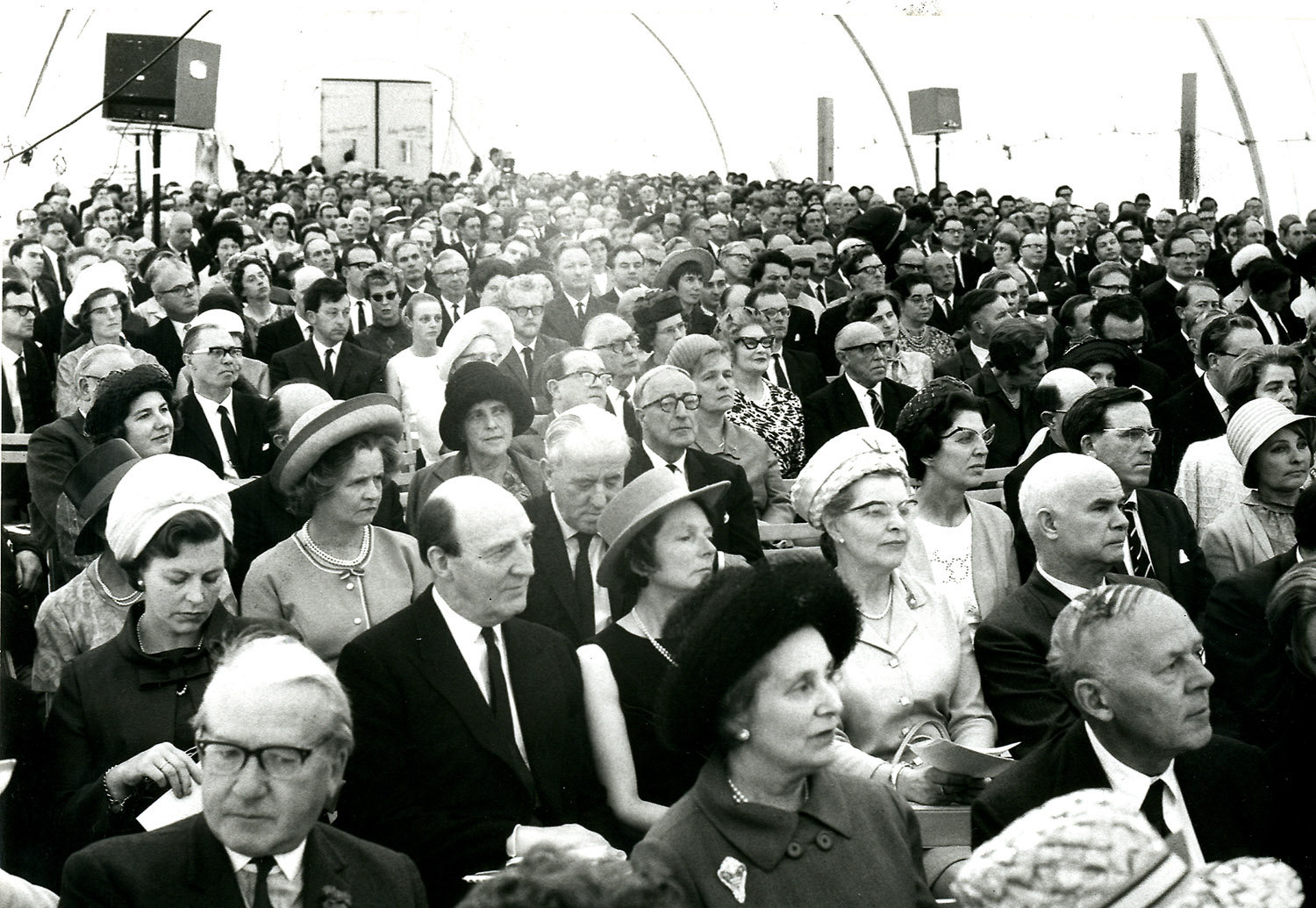
The audience, inside the 'air house.'
During the two following days, the University buildings were open to the public. Some two thousand visitors attended and were able to see the Engineering Complex, the Central Lecture building, the Refectories and the Hall of Residence. Concerts were given by the Central Band of the Royal Air Force and there was a specially arranged exhibition of some of the work of I. K. Brunel. If we were reminded of the past , the enduring memory of Brunel's opening ceremony is of hope and ambition for the future, some sense of pride in what had already been achieved, but, more importantly, the promise of what is to come.
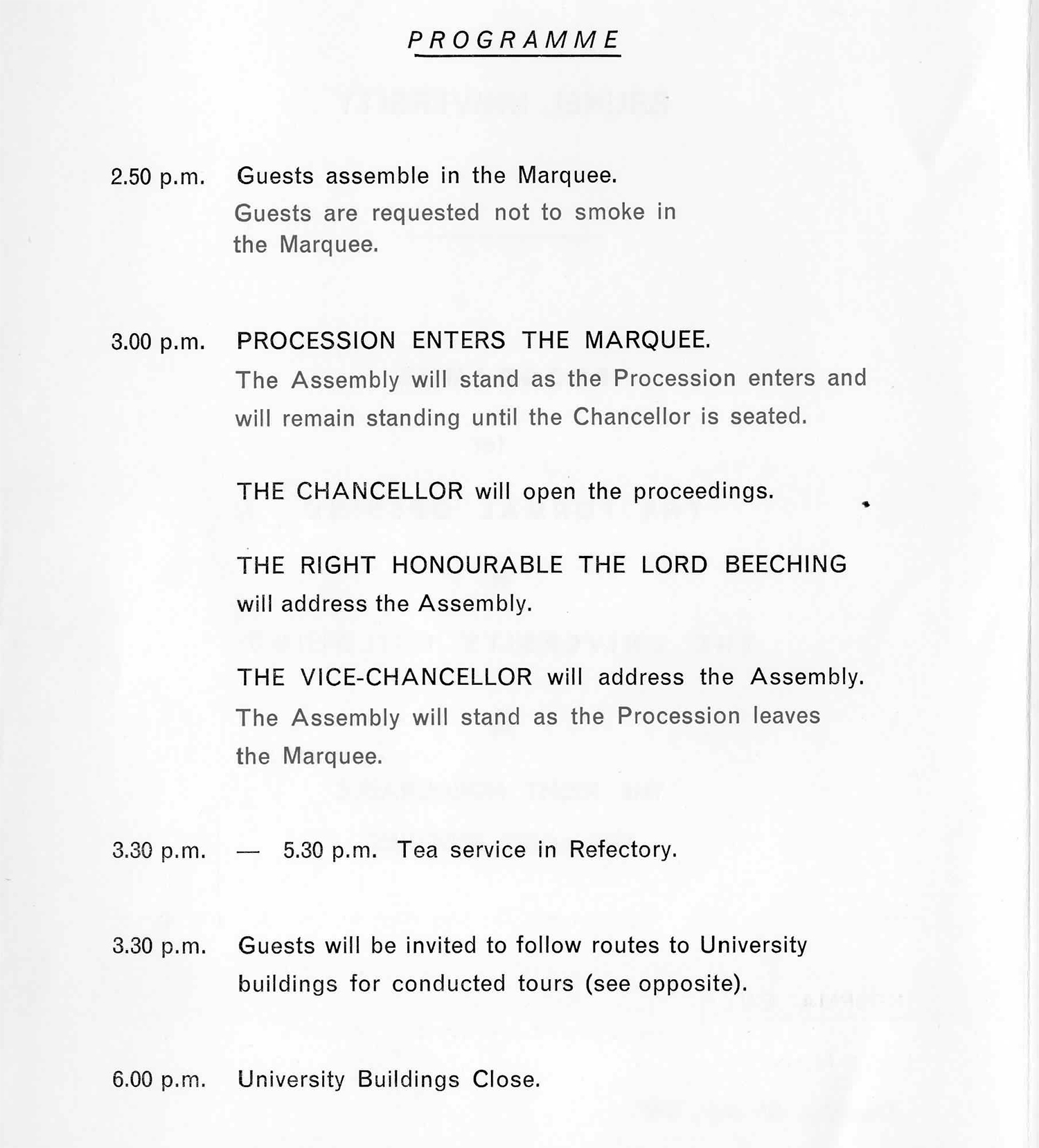
Reported by:
Tim Pilgrim,
Media Relations
+44 (0)1895 268965
tim.pilgrim@brunel.ac.uk